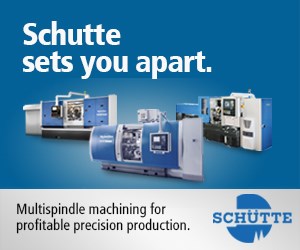Getting to Know Rotary Broaching
Discover ways to get the most from rotary broaching, including details regarding the materials best suited for broaching tools, the most effective speeds and feeds for specific tool shapes and sizes, and strategies for preparing the workpiece and applying the tool.
Rotary broaching is commonly performed on Swiss machines, CNC turning centers, milling machines, and rotary transfer machines to produce an irregular hole or outer profile. The process applies a specially designed tool to the workpiece to cut splines, keyways, polygons and other non-round shapes.
The rotary broaching process is different in turning operations than when performed on a mill or rotary transfer machine. The rotary broach holder has a spindle that rotates independently of the rest of the holder. When rotary broaching on a lathe or screw machine, when the stationary broach tool meets the rotating part, it begins spinning at the same rate as the part. On a mill or rotary transfer, the rotating broach and holder are fed toward a stationary part. When the broach tool meets the part, it stops spinning.
Read “The Basics of Rotary Broaching” for an in-depth look at ways to get the most from the process. The article details what materials are best suited for broaching tools, the most effective speeds and feeds for specific tool shapes and sizes, and strategies for preparing the workpiece and applying the tool. Troubleshooting tips are also covered for when things don’t go exactly as planned.
This easy and economical method for accurately machining polygon forms is worth a look.
Related Content
-
Understanding Micro-Milling Machine Technology
Micro-milling can be a companion process to turning-based production machining. This article looks at some of the technologies that go into a micro-milling machine and why they are important to successful operation.
-
Reducing Variation: The Only Way to Reduce Production Cost
Hidden variation in production is what increases costs in manufacturing. Here are four tips for reducing variability.
-
The Difference Between Ra and Rz
While it is best to measure using the parameter specified in the print, there are rules of thumb available that can help clear up the confusion and convert Ra to Rz or Rz to Ra.












.jpg;maxWidth=300;quality=90)
